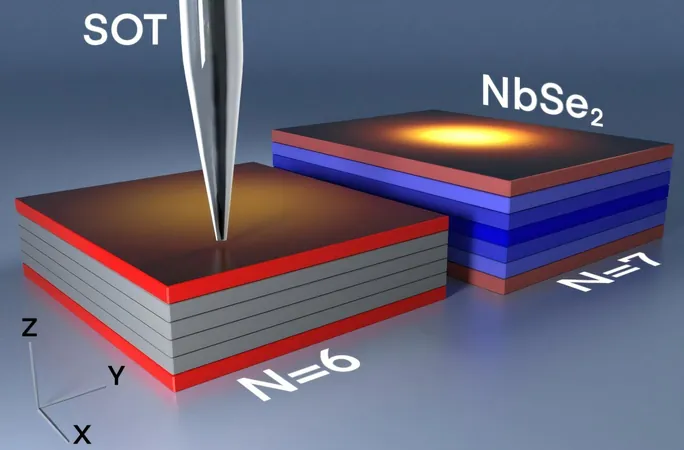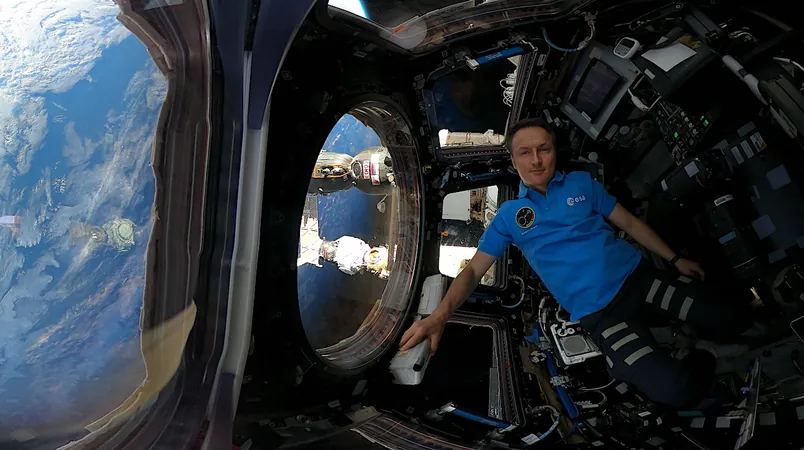
Groundbreaking Discovery in Superconductivity: The Surprising Role of Surface Layers in NbSe2
2025-03-31
Author: Arjun
Groundbreaking Discovery in Superconductivity
In a remarkable breakthrough, researchers have unveiled a previously unknown behavior of superconductivity in extremely thin films of niobium diselenide (NbSe2). Published in the prestigious journal Nature Communications, this study reveals that when these films are reduced to below six atomic layers, superconductivity is no longer distributed evenly throughout the material but is instead confined to the surface.
This unexpected revelation challenges long-standing theories about superconductivity and could have profound implications for the development of advanced quantum technologies. Typically, superconductors are prized for their capability to conduct electricity without resistance, making them crucial for various applications, including quantum computing and energy transmission.
The Research Team
The research team from the Hebrew University of Jerusalem, under the leadership of Ph.D. student Nofar Fridman and Professor Yonathan Anahory, meticulously examined the properties of NbSe2, a layered superconducting material that can be engineered to precise thicknesses as thin as a few nanometers. By utilizing cutting-edge magnetic imaging techniques, they were able to observe how these ultra-thin materials interact with magnetic fields as their thickness varies.
Unexpected Findings
Traditionally, scientists have expected the ability of superconductors to repel magnetic fields—measured by a property known as Pearl length—to increase as materials become thicker. This study confirmed those expectations for films thicker than ten atomic layers. However, in stark contrast, when the films were reduced to just three to six layers (2-4 nanometers), the Pearl length dramatically increased and became independent of thickness, defying established patterns.
Quotes from Researchers
"Our findings suggest that superconductivity behaves differently in very thin samples, where it predominantly occurs at the top and bottom surfaces rather than throughout the entire material," stated Nofar Fridman. "This discovery opens exciting new questions for further research into the properties of ultra-thin superconductors."
Professor Anahory emphasized the pivotal role of their innovative methods in uncovering these findings, stating, "Our high-resolution magnetic imaging was instrumental in revealing details invisible to previous techniques. Discovering this unique surface superconductivity broadens our understanding of superconducting behavior at the nanoscale, potentially paving the way for groundbreaking applications in quantum technologies."
Conclusion
This significant advancement not only enhances our comprehension of superconductivity within thin films but also underscores the importance of specialized measurement tools in revealing unexpected physical phenomena. As researchers delve deeper into the implications of this work, the future of superconducting materials in technology looks more promising than ever. What new technological revolutions could surface from this newfound understanding? Only time will tell!



 Brasil (PT)
Brasil (PT)
 Canada (EN)
Canada (EN)
 Chile (ES)
Chile (ES)
 Česko (CS)
Česko (CS)
 대한민국 (KO)
대한민국 (KO)
 España (ES)
España (ES)
 France (FR)
France (FR)
 Hong Kong (EN)
Hong Kong (EN)
 Italia (IT)
Italia (IT)
 日本 (JA)
日本 (JA)
 Magyarország (HU)
Magyarország (HU)
 Norge (NO)
Norge (NO)
 Polska (PL)
Polska (PL)
 Schweiz (DE)
Schweiz (DE)
 Singapore (EN)
Singapore (EN)
 Sverige (SV)
Sverige (SV)
 Suomi (FI)
Suomi (FI)
 Türkiye (TR)
Türkiye (TR)
 الإمارات العربية المتحدة (AR)
الإمارات العربية المتحدة (AR)